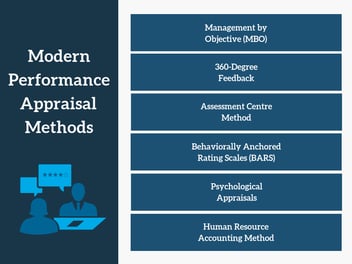Irrespective of an organization’s size, the right performance appraisal system can help businesses streamline performance appraisals, make the process bias-free, arrive at data-driven decisions, and ensure employee happiness. However, choosing the right performance appraisal system is challenging.
What makes it hard is the fact that there are so many performance appraisal systems to choose from. There are an array of factors from deployment options to scalability to consider and assess when choosing performance appraisal tools. Quite often, the selection process boils down to two key points: getting familiar with the features offered by a performance appraisal system and knowing what specific functionalities your organization needs.
Here are a list of non-negotiable functionalities that an ideal performance appraisal tool must have
1. Flexible performance review forms
Performance review forms need to be flexible enough to adapt to a simple review or a comprehensive performance summary that effectively captures employee performance feedback.
A structured performance appraisal form will reduce any chance of ambiguity and bias in the performance review process. Consistency in performance review forms will ensure better quality reviews, improve user adoption, and increase completion rate.
Why do you need flexible performance review forms?
Flexible performance review forms will help line managers arrive at objective, fact-based decisions about an employee’s performance while adapting to unique business needs.
2. Continuous performance review process
A continuous performance appraisal process can help stakeholders have a more structured and continuous conversation that aligns with overall business objectives. It can help managers track and measure employee’s progress against predefined performance goals. This process will ensure that employees are working to achieve what matters while enabling managers to offer actionable feedback and maintain oversight of key administrative tasks like employee expense management.
When a performance review process is continuous, it improves stakeholder engagement and enables them to do their best work. However, a continuous performance review process can help managers provide their employees with simple coaching while allowing employees to have meaningful conversations with their managers.
What is the advantage of a continuous performance review?
It will enable employees to have meaningful performance conversations anytime—not just during annual appraisal meetings. It will help employees understand where they stand and identify development opportunities throughout the review cycle.
3. Goal setting and management
Effective goal setting and management ensures that all employee activities are in line with the strategic vision of the organization. By integrating a predefined performance scorecard, key performance indicators, or a management by objective goal list in their performance appraisal process, businesses can align individual and team goals with their overall business strategy.
It will help businesses analyze the efforts an employee’s performance has on the organization’s bottom line and arrive at data-driven decisions that not only identify top performers, but also ways to optimize enterprise-wide processes for improved employee performance—starting from day one with the help of employee management app.
Why is goal setting and management important?
By setting SMART goals, businesses can set up their employees for success right from the beginning. These goals don’t just offer employees a sense of direction but also push employees further down the road to achieve preset goals within the stipulated time.
4. Performance insights
Performance insights offer employees the tools they need to grow in their careers and engage in ongoing conversations that align with their career interests and competencies. This feature empowers employees to proactively view their performance progress, spot performance and skill gaps, and determine effective improvement opportunities.
On the other hand, managers have full visibility into the dynamics of their team and individual employees. An ideal performance management tool will offer an accurate, real-time insight into the performance, skills, and development needs of the workforce. It will help managers calibrate and develop customized plans that benefit their IT teams.
Why are performance insights important?
Well-rounded performance insights will not only assess the potential of individuals but also identify people at risk of leaving. It helps businesses spot inherent employee retention risks.
5. 360-degree feedback
360-degree feedback is the process of providing employees confidential, constructive feedback from people who work with and around them. Participants involved in this process usually include sources like the employee’s manager, peers, direct reportees, customers, and more.
During this process, stakeholders fill out an anonymous feedback form that covers a wide range of performance competencies. It offers a comprehensive picture of an employee’s performance from an array of perspectives. What’s more, a 360-degree performance feedback system empowers employers to offer well-rounded coaching feedback from peers and managers.
What is the advantage of 360-degree feedback?
360-degree performance reviews improve an employee’s self awareness with a comprehensive report that highlights their strengths, weaknesses, and possible areas of improvement.
6. Rewards and recognitions
To keep employees motivated and engaged, organizations need to celebrate the accomplishments of their employees regularly. A built-in rewards management system can help employers implement innovative employee recognition initiatives like performance or competency-based pay, variable employee compensation, and long-term incentive plans.
Businesses can use the data retrieved from this rewards system to identify and track high-potential employees and groom them for future leadership roles. They can also analyze and compare internal and external compensation data to create a competitive compensation program that keeps their employees motivated.
What is the key advantage of having a rewards and recognition system in place?
An interactive rewards and recognition program will help businesses link an employee’s performance to compensation and retain top performers through well defined training plans.
7. Performance improvement plans
All teams need an intelligent performance management module that tracks employee performance proactively and triggers a performance improvement plan when an employee’s performance slips below a certain level.
Businesses need the option to trigger specific employee training programs to address and improve the performance of underperforming employees. It is a formal document that highlights recurring performance issues along with objectives that an employee needs to achieve.
What are the advantages of performance improvement plans?
Performance improvement plans help organizations invest wisely in their people and help them overcome performance deficiencies and achieve their performance goals.
Performance appraisal made simple
With so much choice in the performance appraisal tools market, it can be difficult to know where to begin when getting out there and trying to compile a shortlist of potential providers. Your first step should be to create a clear and decisive needs analysis of the current state of your organization’s performance appraisal system and figuring out where opportunities for improvement lie.
Involve a number of different stakeholders in this process to make sure you get a representative overview. Armed with this information, you can target providers that have expertise in the areas you know are important. If you’re looking for a performance management system that can make your performance management process painless, take a look at our comparison of top performance management tools in the industry.
Get started with the Kissflow Platform and learn how to leverage its features to drive better results








.webp?width=285&height=570&name=performance-management-%20(4).webp)




